
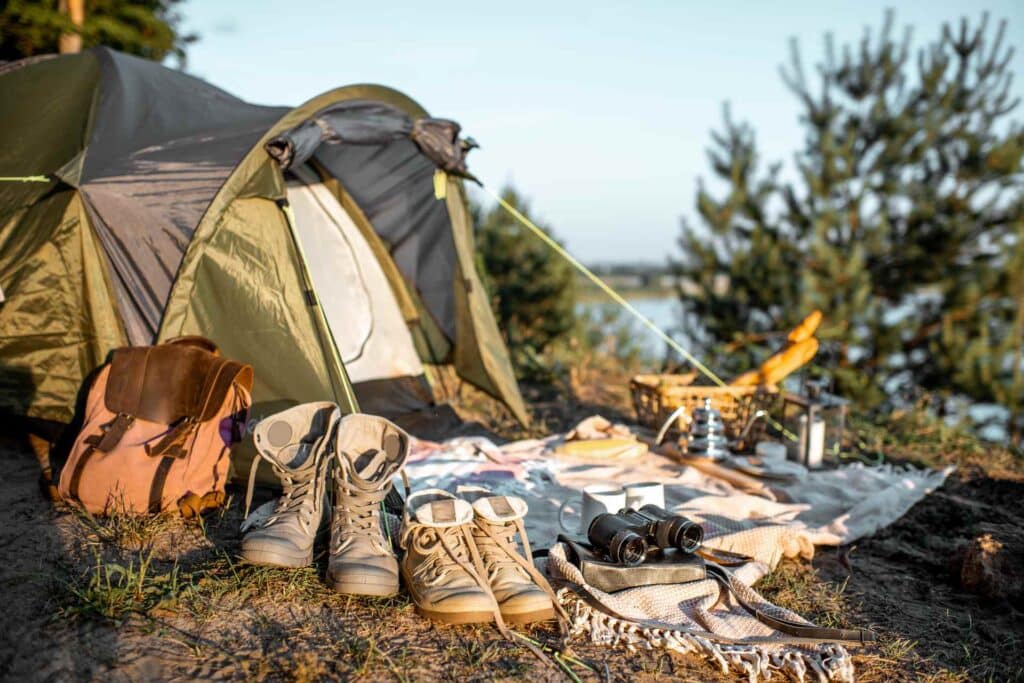
Welcome to Explore Montana Outdoors! Embarking on a camping trip with your family is not just a trip, it’s an exciting adventure filled with new discoveries and unforgettable moments.
However, ensuring the safety of our little campers is paramount. On this page, we provide essential camping safety tips and guidance designed not only to educate but also reassure both you and your children, making you feel confident and prepared for the great outdoors.
From setting up camp to engaging in fun activities, learn everything you need to make your family’s camping experience safe and unforgettable.
Ensuring camping safety for kids is pivotal to making camping fun and safe, whether during the bustling summer months or any other time. Our essential camping safety tips for families are designed to address kids’ camping experiences’ unique needs.
From teaching wildlife awareness, such as identifying and reacting to encounters with bears or snakes, to implementing summer safety measures like staying hydrated and wearing sunscreen, we cover everything to ensure your family camping trip is enjoyable and secure.
We’ll guide you through setting up a safe campsite, educating your children about the environment, and how to handle any potential dangers, such as getting lost or encountering a wildfire.
These comprehensive strategies are vital to fostering a love for the outdoors while prioritizing safety.

“One sunny afternoon, my family and I were setting up camp near a serene Montana lake, choosing a spot away from any berry patches to avoid unexpected bear visitors. I gathered the kids for a little ‘outdoor classroom’ session as we settled in. We discussed the importance of staying hydrated and applying sunscreen, especially at higher altitudes where the sun can be deceptively strong. I showed them how to recognize snake tracks and what to do if they ever encountered a bear. We also discussed the best practices for a safe campsite, keeping food stored away and trash secured. The kids were particularly excited about using the compass I gave each of them, turning a lesson on not getting lost into a treasure hunt for natural landmarks. By the time the sun dipped behind the mountains, they were better prepared for the wilderness and more in tune with their environment.”
Introducing kids to the great outdoors through camping can spark a lifetime of adventure and connection with nature. Experiencing the simplicity of living outside allows kids to develop respect for the environment, boosts their self-esteem, and enhances problem-solving skills, making you feel proud of their growth and accomplishments.
Camping also offers kids unique opportunities to learn practical skills like setting up a tent or cooking over a fire. For many kids, these experiences are thrilling and contribute to building enduring family memories.
Moreover, it strengthens bonds as families engage in activities together, away from the daily distractions of technology. Overall, camping gives kids essential life lessons in a fun, dynamic environment, bringing educational elements to recreational activities.
Unlocking Safe Camping Practices for Kids
We’re committed to unlocking safe camping practices that will protect your little adventurers every step of the way. Teaching kids about camping safety isn’t just about avoiding the dangerous aspects; it’s about empowering them with the knowledge and training they need to enjoy the great outdoors.
By integrating essential tips into their hiking routines, children learn to navigate nature’s challenges safely. Whether they learn to identify potential risks or understand the importance of sticking together as a team, our guidance ensures that every camping trip is both enjoyable and secure.
Let us help you teach your kids the fundamental principles of safe camping, fostering a lifelong appreciation for outdoor exploration.
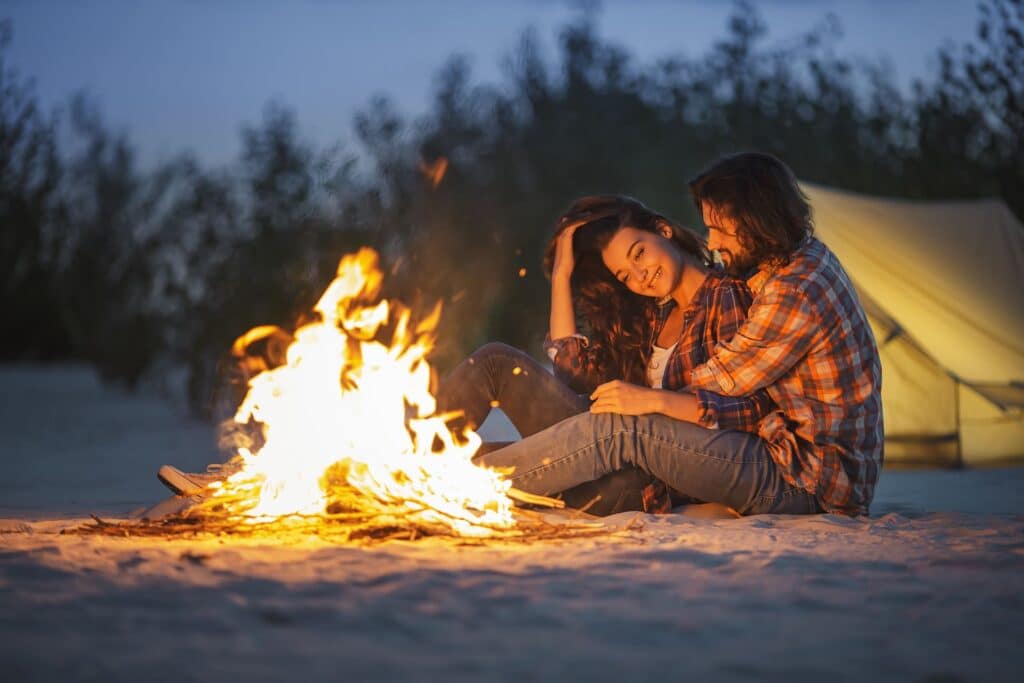
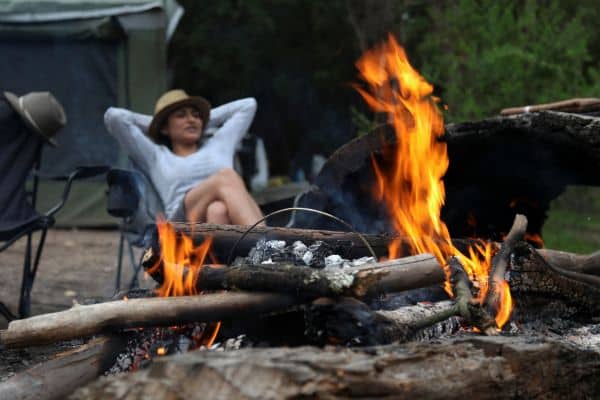
When camping with kids, it’s essential to discuss fire safety to prevent any hazards that might arise. Teaching kids the importance of maintaining a safe distance from the fire and the significance of never leaving it unattended are crucial safety tips.
I
When camping with kids, ensuring playground safety is crucial. Playgrounds offer many activities that keep children engaged and happy, but monitoring the equipment closely is essential.
Before letting your kids play, inspect the playground for any unsafe conditions and confirm that all equipment is well-maintained and suitable for your child’s age. Adequate safety measures can significantly reduce the risk of accidents.
Teach your children to use the playground responsibly and supervise their activities to ensure they enjoy a safe and fun experience. As a parent, you must inspect the playground for unsafe conditions and confirm that all equipment is well-maintained and suitable for your child’s age. These simple precautions help create a safe play environment where memories are made without compromise.
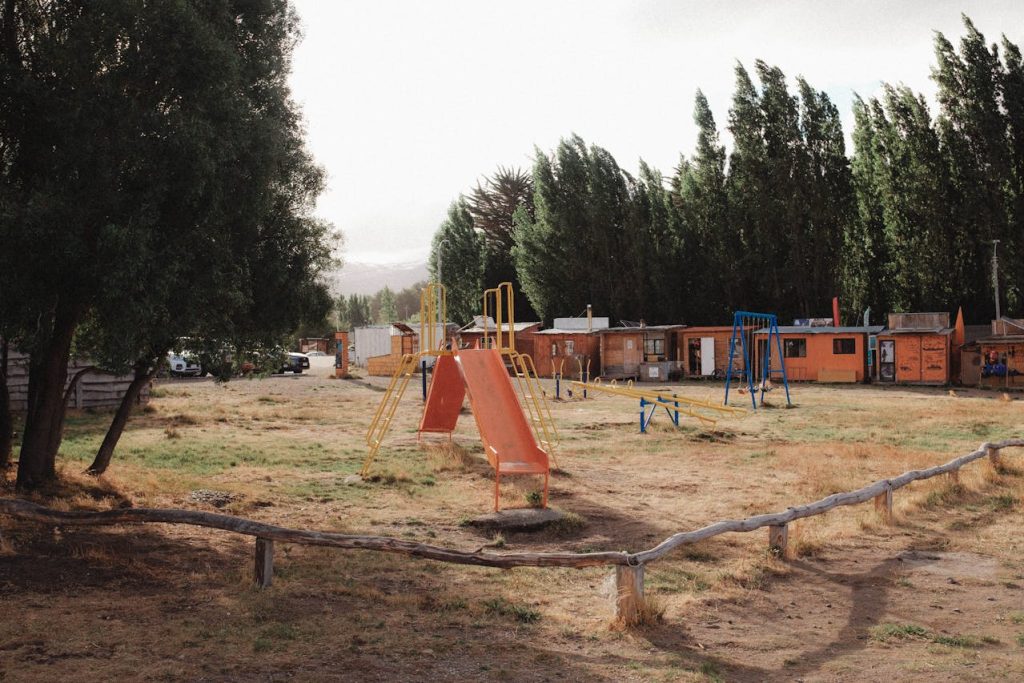
Ensuring safe play environments is crucial when camping outdoors with children. Every parent wants to keep their kids safe, and knowing the best practices for outdoor safety can make all the difference.
From selecting safe, well-maintained play areas to teaching kids about natural hazards, prevention is key. Use dedicated play zones designed to keep children safe from outdoor hazards.
Furthermore, ensure you supervise effectively; active oversight is critical to avoiding accidents. Incorporating these safe play principles will significantly enhance your family’s camping experience, making every outdoor adventure with your kids fun and safe.
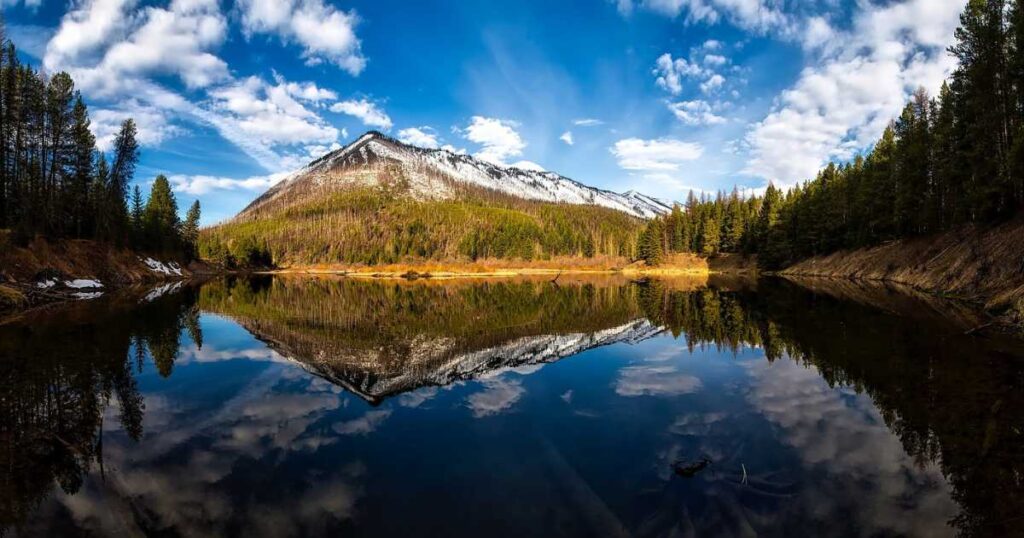
Teaching kids about water safety is crucial as summer approaches, especially around lakes and pools. Water can be a fantastic source of fun but also poses serious risks if safety rules aren’t followed.
When teaching children how to stay safe in water, emphasize the importance of never swimming alone and the use of flotation devices. Water safety lessons should include recognizing water hazards, such as strong currents or deep areas, and understanding how to respond in case of an emergency, such as calling for help or performing CPR.
Whether it’s a gentle lake or a backyard pool, reinforcing these water safety tips will ensure your outdoor adventures remain enjoyable and safe for all children involved.
<image: your image file link here>
When planning camping adventures with your children, it’s essential to discuss potential water hazards that can turn dangerous. Currents in rivers and lakes can sweep a child away in seconds, making water safety a critical component of camping safety for kids.
It’s also vital to be aware of what’s beneath the water’s surface; underwater obstacles like rocks or branches present real dangers. Ensuring your kids know about these risk can drastically reduce the chance of accidents.
By emphasizing these hazards and adopting proactive safety measures, you’ll protect your family and foster a safer camping environment where fun and adventure can thrive without unnecessary risks.
“One sunny morning, I gathered my family for a hike through Montana’s thick forests, a favorite pastime that always brings us closer to nature—and each other. Before we set off, I sat the kids down for a talk on the importance of bear safety. With wide eyes, they listened as I explained how to identify bear tracks and distinguish between a black bear and a grizzly. I showed them pictures, and we practiced making noise while hiking to avoid startling these majestic creatures. As we hiked, their eager eyes scanned the ground, excited to spot a track or two. This wasn’t just a hike but a lesson in respect and caution for the wildlife that shares our treasured wildlands.“
As you prepare your family for an adventure in the great outdoors, it’s important to discuss safety wildlife topics such as identifying local wildlife and understanding potential dangers. It’s crucial for kids to recognize the signs of wildlife, including bears, to practice bear safety effectively.
While encountering wildlife can be a thrilling part of camping, knowing how to safely observe animals from a distance is essential to avoid hazards. Teaching kids about the dangers associated with wildlife and how to react can prevent unwanted encounters.
Awareness of these important aspects of camping safety ensures a safer and more enjoyable experience for everyone involved in your family’s outdoor adventures.
<image: your image file link here>
When camping with kids, one aspect you can’t overlook is how you store your food. Proper food storage is crucial not only for keeping meals safe but also for avoiding attracting wild animals to your campsite.
Always use airtight containers or bear-proof canisters when camping in areas where wildlife is common. This simple step helps ensure that smells don’t escape and invite curious creatures.
Additionally, if possible, hang food high up between trees away from your sleeping area. Remember, the safety of your food and the way it’s stored can directly impact the safety of your camping trip.
Not taking the correct precautions could turn a fun family outing into a risky situation.
<image: your image file link here>
As we dive into the joys of summer camping, it’s crucial to teach our little adventurers about outdoor safety, especially how to protect themselves from potentially dangerous wildlife. In this section, we’ll explore preventive measures that ensure your family’s safety while enjoying the great outdoors.
Educating kids on how to identify animals and understand their behaviors is a key part of camping safety. We’ll discuss strategies to keep food stored securely, minimizing attractions that might bring wildlife too close for comfort.
By instilling these habits, we not only safeguard our families but also nurture a respectful coexistence with nature during our camping expeditions.
<image: your image file link here>
Understanding the importance of safety in outdoor activities can’t be overstated, especially when it comes to camping. Ensuring that kids are equipped with the right camping gear is crucial to prevent accidents and guarantee a safe environment.
By educating them on the proper use of their gear and the principles of outdoor safety, we foster not only their autonomy but also their security. From establishing rules around campfires to exploring ways to mitigate potential risks associated with lakes and pools, knowledge and caution in handling all safety matters ensure enjoyable and worry-free experiences.
Always prioritize safety, whether dealing with fire hazards, wildlife encounters, or ensuring safe play areas in the great outdoors.
<image: your image file link here>
Teaching safe hiking practices is essential when children are involved. At Explore Montana Outdoors, we believe in training and equipping kids with the right skills to remember every step of the journey.
The narrative of hiking safety is not just about outdoor fun; it’s about ensuring that our hikes remain memorable for the right reasons. When we teach kids safe hiking, we’re building their confidence and respect for nature.
It’s all about repeating safety measures until they become second nature. Safe hiking habits can protect your family from unexpected situations.
Embedding a safety mindset starts at the playground and ends at the highest peak, making every hiking trip with children both safe and enjoyable.
Choosing the perfect campground is crucial for ensuring a safe and enjoyable camping trip with your family. It’s important to select a campsite that’s suitable for children and offers both security and fun activities.
Some campgrounds provide designated play areas and are well-maintained, minimizing risks and enhancing safety. When looking for a campsite, consider amenities like restrooms and how close your site is to water bodies or trails.
These elements will significantly influence your camping experience. Additionally, always remember to follow fundamental camping tips, like assessing the safety facilities available at the campground.
By keeping these tips in mind, you’re more likely to find an engaging and secure campsite for the kids.
When camping with kids, it’s essential to balance fun and safety. While a camping trip should always prioritize safety, that doesn’t mean you can’t have tons of fun!
Our tips will help you prepare for any outdoor adventure. Planning fun and safe activities ensures that everyone can relax and enjoy the experience.
Whether exploring nature, singing around the campfire, or stargazing, the emphasis on fun should always be balanced with practical safety tips. This way, your camping trip remains a delightful experience for the entire family, filled with cherished memories and learning opportunities in the great outdoors.


The Montana Style is a participant in the Amazon Services LLC Associates Program, an affiliate advertising program designed to provide a means for sites to earn advertising fees by advertising and linking to Amazon.com
To learn more about Trevor Riggs, please visit our About page.
The Montana Style is a participant in the Amazon Services LLC Associates Program, an affiliate advertising program designed to provide a means for sites to earn advertising fees by advertising and linking to Amazon.com